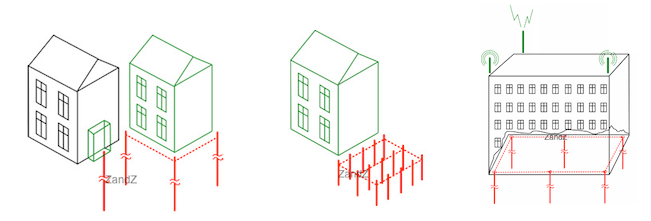19.06.14 , ,
We quite often receive questions about the required number of grounding devices. When arranging grounding for various reasons, one should remember that the requirements imposed will be varied as well. For instance, if you arrange grounding without connecting it to lightning protection a) in ordinary clay soils, the local (re) grounding resistance should be the recommended maximum of 30 Ohm (with line voltage of 220V with a single-phase current supply or line voltage of 380V with a three-phase power supply); b) in sandy soil, local (re) grounding resistance should be the recommended maximum of 150 Ohm (line voltage of 220V with a single-phase current supply or line voltage of 380V with a three-phase power supply).
When installing a lightning protection system, the requirements are imposed by the design of a grounding device. It should consist of at least three vertical electrodes 3 m in length joined together with a horizontal electrode. The distance between the vertical electrodes is at least 5 meters. This design allows for a specified impulse resistance on a grounding device.
Furthermore, the section may not have a single building but several ones. For example, a house, a bathhouse, a barn, and a garage.

This begs the question:
1. How to organize a grounding for multiple buildings and whether they can be combined under a single grounding device (not to be confused with an electrode).
2. Is it possible to use a single grounding device for protective grounding and connecting it to the lightning protection?
The answer is defined in Electrical Installation Code (Par. 1.7.55 in 7th ed.):
* By the "adjacent" (separate), we mean grounding devices that are located at such a distance from each other that there is no zero-potential area.
If there are zero potential areas between grounding devices, such grounding devices are "independent".
Such objectives are easily met, when multipurpose ready-made grounding sets are used, which include all the necessary elements for mounting a grounding electrode.

Related Articles:





